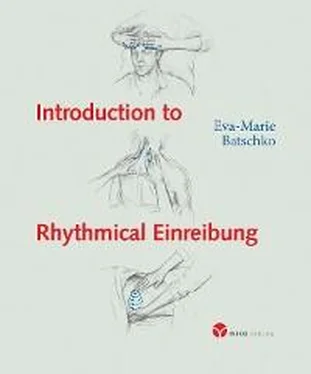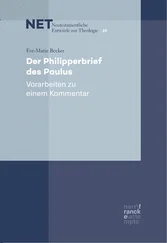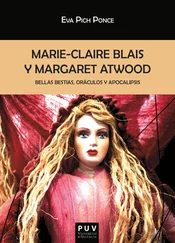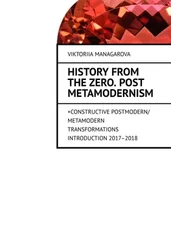History of Rhythmical Einreibung
Dr. Ita Wegman (1876-1943) founded the Clinical and Therapeutic Institute in Arlesheim near Basel on 8 June 1921.
This was the beginning of her intensive collaboration with Dr. Rudolf Steiner (1861-1925) in the course of which ‘rhythmical massage therapy’ was developed out of ‘Swedish massage’ (as developed by Per Henrik Ling, Stockholm, 1813).
Ita Wegman liked to practise this form of manual therapy herself – whereby the nurses watched and learned by imitation.
Rhythmical massage therapy was one of the subjects taught in the nursing courses at the Clinical and Therapeutic Institute alongside the theoretical and practical understanding of the human being. These courses were initiated by Rudolf Steiner but could not be carried out until after his death.
In twelve years of collaboration with Dr. Wegman, Dr. Margarethe Hauschka deepened the basics of rhythmical massage therapy, rendering it more teachable. In 1962 she founded the ‘School for Artistic Therapy and Massage’ in Boll, at the foot of the Swabian Alb.
In addition to physiotherapists and massage therapists, she also trained nurses here. The question began to arise in the latter about a method by which the effect of the applied substances (ointments and oils) could be enhanced and supported. Margarethe Hauschka responded in 1967 with the first course for Rhythmical Einreibung.
When the community hospital was opened in Herdecke in 1969, it was the nurses who welcomed this method and integrated it into their nursing practice. Rhythmical Einreibung became an integral part of further and advanced training not only in Boll, but also at the Further Training Institute for the Nursing Professions founded in Unterlengenhardt in 1980 (since 1982 ‘Haus Sonnenblick’).
Meanwhile it is taught and practised worldwide in anthroposophical institutions specialising in the fields of therapy, nursing and special needs education.
The designation ‘Rhythmical Einreibung, as developed by Wegman / Hauschka’, which has been officially used since 1999, reaffirms both its origin and its connection with the anthroposophical view of the human being. There are meanwhile training centers for this treatment method worldwide. In Germany it is available at the Margarethe Hauschka School in Boll near Göppingen, the Carl Gustav Carus Academy in Hamburg, the Herdecke Community Hospital, the Filderklinik near Stuttgart and the Havelhöhe Community Hospital in Berlin, among others. Information and further contact addresses can be obtained through the Association of Anthroposophically Oriented Nursing Professions (Verband anthroposophisch orientierter Pflegeberufe) in Filderstadt.
Even though different areas of focus have developed in these training centres, they have all sprung from the same source. The training centre for Rhythmical Einreibung in Hamburg at the Carus Academy has been awarding recognised certificates since 1999. Since 1998, the Working Group for Training in Rhythmical Einreibungh has also been located there. In 1998, Edelgard Große-Brauckmann started a pilot project to train teachers in Rhythmical Einreibung. In 1998, Eva-Marie Batschko founded the Working Group for Rhythmical Einreibung Instructors at the Carus Akademy in Hamburg.
About the teaching method
Our training seminars for Rhythmical Einreibung at the Carus Academy in Hamburg each start with an introductory evening lecture on the nature of the human being.
The participants then review this lecture using a learning method for adults developed by Coenraad van Houten (1) in collaboration with Bernard Lievegoed. Rudolf Steiner's research on the life processes forms the basis for this approach.
| Life processes |
Learning processes |
|
| 1) Breathing |
Observing |
Attention – exhalation and inhalation with all senses (What was said – what did we hear?) |
| 2) Warming |
Connecting |
Warming to the topic (What are the essential emotional experiences and thoughts?) |
| 3) Nutrition |
Processing |
Process of digesting the topic – Working on and analysing different thoughts |
| 4) Separation |
Individualisation |
Incorporating and making the content our own. Allowing new thoughts, feelings and intentions to rise up in ourselves (Distinguishing the essential from the nonessential – developing a question) |
| 5) Conservation |
Practise |
Cultivating the seeds of the new thoughts (Repetition) |
| 6) Growth |
Growing skills |
Transforming concrete exercises into higher abilities – synthesis. Drawing benefit from resistance! |
| 7) Reproduction |
New creation |
Developing and realising something new – creativity |
These seven learning steps take place both consecutively and simultaneously – as is also the case with the life processes of the body (unconsciously).
The second part of the seminar is devoted entirely to practical work which takes place in groups of three. Every participant assumes each of the three different roles of patient, practitioner and observer:
The patient with the question: how does it feel? (Too firm – too light – too fast – too slow, etc.).
The practitioner with the question: what effects come about? (Warmth – deepening of the breathing – vitality, etc.).
The observer with the question: is the technique correct? (Direction of circles – start of the movement – course of treatment, etc.).
The process is carried out in seven different stages (cf. Rolf Heine (2) who describes the process in three stages).
Stage 1:
The treatment is demonstrated – without comment – with the participants at first only observing.
Stage 2:
The participants imitate what they have observed in groups of three: posture, gestures and technique are absorbed. What they have experienced, including for themselves, is then communicated in the plenum.
Stage 3:
The same treatment is now explained by way of preparation and then demonstrated again. With increased attentiveness, what has been demonstrated is repeated in groups of three. In doing so, the basics of the technique are learned. The experiences are then discussed in a more differentiated way. The new experiences are examined in the plenum.
Stage 4:
The same treatment is performed again in groups of three and the acquired insights and experiences are applied. There is again an exchange of views about what has been experienced, including by the participants themselves. In the plenum we seek to understand the inherent laws and thus also obtain an understanding of the indications.
Stage 5 as a mirror of Stage 3:
The knowledge obtained by each person for themselves is repeatedly practised with new aspects.
Stage 6 as a mirror of Stage 2:
Higher abilities can develop through our own cognitive process.
Stage 7 as a mirror of Stage 1:
We can now become creative for ourselves in what we do.
Consideration of various substances completes this practical part of the seminars.
Exercises for training observation ‘Finger exercises’ as preparation
The water exercise
A basin filled with water is put on the table. Standing at one end of the basin, I touch the water surface with my hands held in parallel.
First I can feel the temperature of the water, then its surface tension. Slowly I submerge my hands deeper and deeper into the water and can perceive that this is possible only by exerting pressure.
If I release the tension from my hands under water, the water carries them back to the surface. The water has tangible buoyancy.
When I lift my hands from the surface, the water is sucked upwards slightly before contact is completely broken.
Читать дальше



![Andrew Radford - Linguistics An Introduction [Second Edition]](/books/397851/andrew-radford-linguistics-an-introduction-second-thumb.webp)








